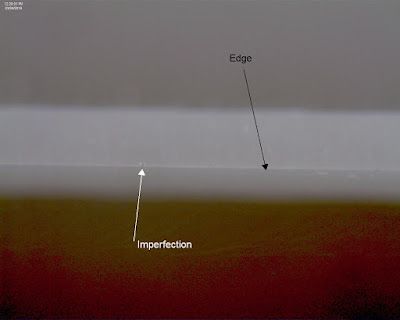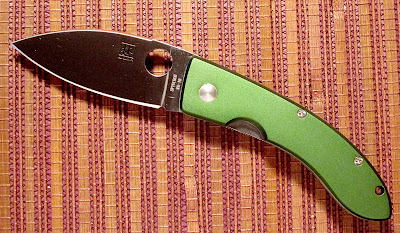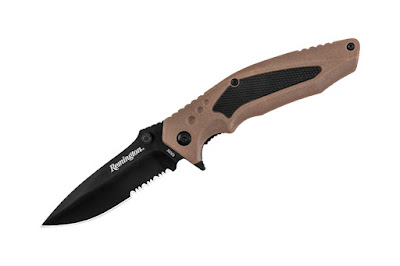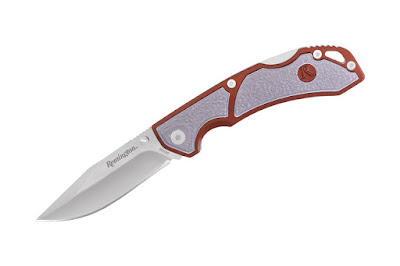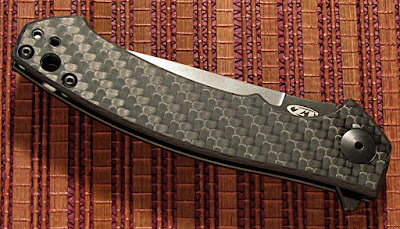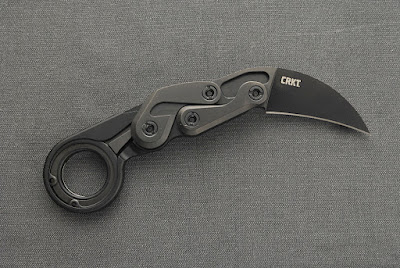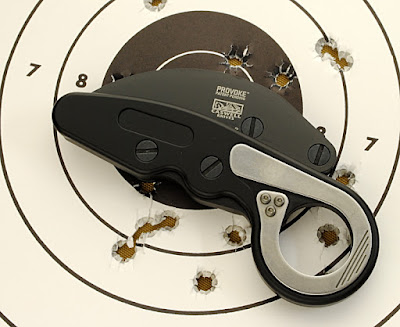Recently
I came upon knives from Drahth Knives Company.
I was impressed with both the beauty of the knives and their motto:
“Life is too short to carry an ugly knife.”
 |
| Mini-Bowie in Damascus |
I
contacted Andy the owner and asked a few questions about his knives and his
company. It’s always interesting to me to
find out how small businesses get started.
I’ve already stated my belief that small businesses are the spark plug
of the American economy. Its true Ford
and ATT contribute more in total dollars, but they all started with a dream to
create prosperity for a small group and their families.
 |
| All of the sheaths have the same attention to detail |
Andy
started grinding knives for himself at a machine shop owned by his father and
grandfather when he was eleven. Of
course, those were for himself and a few friends. But other interest took Andy out of the shop
and until recently in different directions.
In
2014, chance gave Andy the option to start making knives again. Combining his and his friends experiences
about blade shapes and handle lengths, Andy started making knives. He’s partial to blades with longer handles which
make for a much more controllable knife.
 |
| The long handle gives you plenty of grip and control over the blade |
The
blades are typically 1095 steel shaped by stock removal. This steel has a lot to recommend it even in
view of today’s world of super steels.
The 1095 blades can be hardened to Rockwell c values of 55 to 60 and
still have some of the inherently flexibility an outdoor knife needs. As noted knifemaker Ernie Emerson said of
another steel, “A bent blade is still a knife, a broken blade is junk!”
1095
steel can be resharpened with ordinary stones available in just about any
hardware, big box or sportsmen store. It
throws great sparks with a Ferro rod for fire making. All the steel needs is a little coating of
oil coating to prevent rust. Use a food
safe oil just to be sure.
 |
| The elliptical blade reminds me of the classic Canadian Belt knife, but this sports a thumb rest for more control. |
A
variety of wood handles are available ranging from walnut to exotic wenge. Wenge is a legume tree from the Congo and
Cameroon. (Legume wood means the tree
has seed pod. Who would have guessed it?)
Are
they perfect? Why would they be? I’m far from perfect myself, but they are
pretty damn nice. The leather sheaths
are well sewn and fit the knife well. I
like how the knife sits deep the sheath where it will stay secure from grasping
vegetation as you move through the fields and forests. The logos stamped into the leather are sharp
and well-defined. The knives are easy to
grasp and have an instinctual feel to them.
The full tang construction is slightly raised of the wood grips. You can barely feel a slightly raised edge of
the steel over the wood.
We’ll just have
to wait to see the evolution of his knives.
Where
can you get these for yourself? I’d go
to his website; https://drahthknives.com/ or contact him at knifeknapper66@yahoo.com











